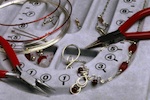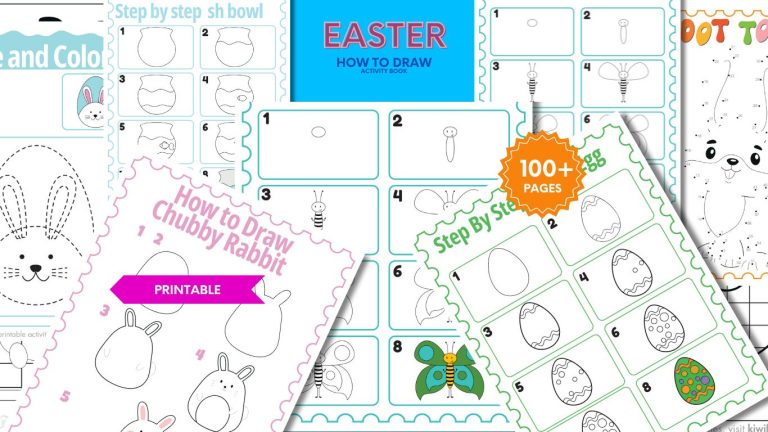There are several forms of jewellery making for kids, and all are lots of fun. The most common form of jewellery making involves threading glass beads onto flexible wire or cord, but cotton threaded jewellery and more complex wire knitting and weaving is also becoming popular.
The range of designs and styles in jewelry making is limitless, and once you know the basic techniques, your designs are only limited by your imagination.
Where do you learn Jewellery Making?
There are specialist bead shops is just about every city in New Zealand, and most, if not all of these stores offer classes. If you don’t have a specialist store nearby, check out your local craft store or sewing centre. Many of these shops have now expanded their lines to include jewellery making.
Jewellery Making has also become a popular option for local high schools and community centres. Most community education facilities put out their programmes on a term by term basis, so ask them to send you the programme for the next term or watch your local paper around school holiday time.
Children love these classes and workshops, and once they’ve had some help to get started, they will spend hours creating their own special designs.
Child’s Birthday gift? Find a great selection of popular Books & Authors.Age: 0 1 2 3 4 5 6 7 8 9 10 11 12 Years Old |
||||
|
|
|
|
|
|
What age can your child start Jewellery Making?
Children as young as 3 or 4 can start threading large holed beads onto cord, but for true jewellery making techniques children need to have some degree of hand-eye co-ordination and a little bit of dexterity. Creating and attaching ‘findings’, (the bits that make the jewellery stay together), can be a bit tricky and requires nimble fingers and a little bit of patience.
By about 8 years old children have enough basic skills to complete simple beading with help. Once a child is Intermediate age they’ll start surprising you with what they can create.
What equipment do you need for Jewellery Making?
Just about all jewellery is made with the same basic tools. You will need a pair of round nosed pliers for making loops, a pair of flat nose pliers for crimping and attachments, and ideally a pair of wire cutters also. You can get away with using scissors to cut your jewellery wire, but don’t expect to use your scissors for anything else afterwards!
There are numerous other types of jewellery pliers available, but most are not necessary to begin with. As you or your child progress, you may investigate more specialist tools.
A bead board is not absolutely vital, but it does make life easier and once used, you’ll wonder how you survived without it. A bead board is a moulded tray with space and measurements for laying out your necklaces, and divisions for setting aside the beads and findings you will be using for your piece. Bead boards are particularly useful when you start making more complex jewellery.
Many people like having a special container for storing all their beads and findings. There are numerous containers available, but any kitchen container will do. If you want one with individual sections, make sure the divisions go right to the lid. If not, when you pick up your container, all your bits will jumble from one section to the next.
How much does Jewellery Making cost ?
Most NZ beading stores charge around $10 to teach you how to make a specific piece of jewellery, plus you also have to purchase the necessary beads and findings. How much you spend on materials for each piece can vary dramatically depending on the types of beads you choose. You should be able to make a necklace for less than $10, and 2 or 3 bracelets for the same price. (If you want 24 carat gold and diamond studs you’ll be looking at a little bit more!)
Some stores offer classes over several weeks, and these usually fall into a similar price bracket of about $10 per class. These classes focus on teaching you all the basic techniques, which you can then translate into any design.
Most beading stores also offer “open tables”, which means you can purchase all the bits you want and then use their tools to put it all together. There is no instruction at an open table, and usually no charge other than the cost of your materials.
Jewellery Making tools are relatively inexpensive, and you can get a good set of pliers for between $10 – $15. There are also some good sets on the market which give you the 3 basic pliers for $20 -$25. Bead boards range from about $8 – $30 depending on the size and style.
When buying beads – shop around. Specialist bead shops give you an enormous selection of quality beads, but they are usually sold singly and can be quite expensive. General craft shops and sewing centres tend to sell their beads by the packet, and are a much more cost effective way to build your bead collection.
Packet beads have been designed to provide enough beads for a specific project or projects. The price per packet ranges from about $5 – $10, and will usually include enough beads to make a complex necklace, or 2 or 3 simple bracelets. If you are unsure just how far the packet will go, ask the sales assistant.
How much time does it take to learn Jewellery Making?
There are two ways to learn jewellery making, and each will give you a specific result. Like anything, the more you practice the better you’ll get.
- You can choose a specific style or piece of jewellery you would like to make, and a bead store or craft shop can teach you how to make that specific piece. For beginners, this will take anywhere from 1 hour to 3 hours depending on the piece.
- You can book into a class that continues over several weeks. These workshops are usually designed to teach you all the techniques, which you can then translate into any design. To get a real grip on all the basics, it will take 4 or 5 sessions, and then another 4 or 5 to understand the more complex techniques. Each session usually runs for about 2 hours.
Making jewellery is a fun, creative activity for both children and adults. However, be on your guard for little siblings who want to get involved too – you may find beads strewn around your house, or in hard-to-reach places, like up noses and down throats!










